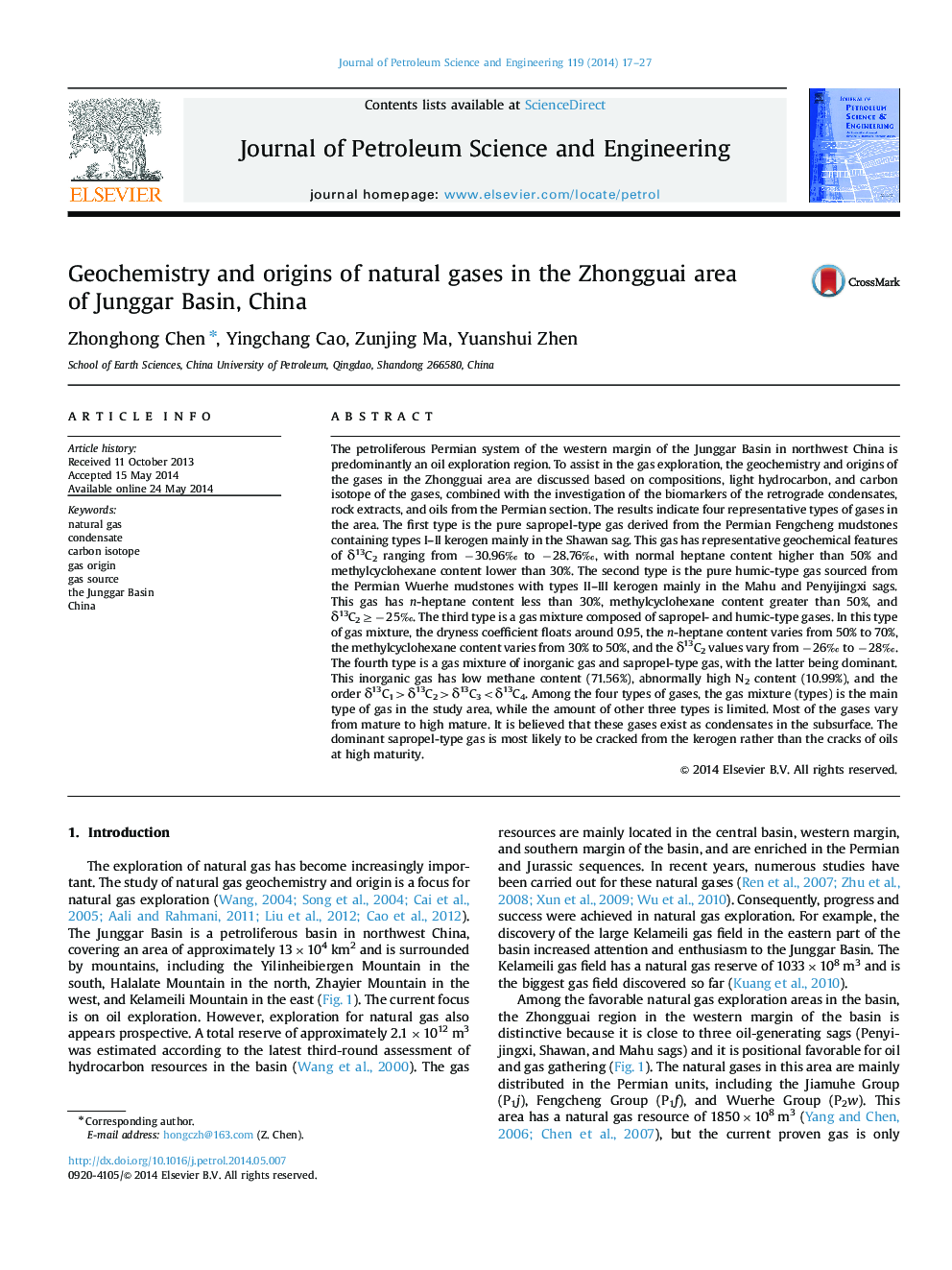| کد مقاله | کد نشریه | سال انتشار | مقاله انگلیسی | نسخه تمام متن |
|---|---|---|---|---|
| 1755103 | 1522822 | 2014 | 11 صفحه PDF | دانلود رایگان |

• Comprehensive gas geochemistry in the Zhongguai–Xinguang area in the Junggar Basin was reported.
• Gases derived from sapropelic and humic kerogens were found with some degree of mixing.
• The gas was cracked from kerogen rather than oil.
• Gases most likely sourced from deep earth were found.
The petroliferous Permian system of the western margin of the Junggar Basin in northwest China is predominantly an oil exploration region. To assist in the gas exploration, the geochemistry and origins of the gases in the Zhongguai area are discussed based on compositions, light hydrocarbon, and carbon isotope of the gases, combined with the investigation of the biomarkers of the retrograde condensates, rock extracts, and oils from the Permian section. The results indicate four representative types of gases in the area. The first type is the pure sapropel-type gas derived from the Permian Fengcheng mudstones containing types I–II kerogen mainly in the Shawan sag. This gas has representative geochemical features of δ13C2 ranging from −30.96‰ to −28.76‰, with normal heptane content higher than 50% and methylcyclohexane content lower than 30%. The second type is the pure humic-type gas sourced from the Permian Wuerhe mudstones with types II–III kerogen mainly in the Mahu and Penyijingxi sags. This gas has n-heptane content less than 30%, methylcyclohexane content greater than 50%, and δ13C2≥−25‰. The third type is a gas mixture composed of sapropel- and humic-type gases. In this type of gas mixture, the dryness coefficient floats around 0.95, the n-heptane content varies from 50% to 70%, the methylcyclohexane content varies from 30% to 50%, and the δ13C2 values vary from −26‰ to −28‰. The fourth type is a gas mixture of inorganic gas and sapropel-type gas, with the latter being dominant. This inorganic gas has low methane content (71.56%), abnormally high N2 content (10.99%), and the order δ13C1>δ13C2>δ13C3<δ13C4. Among the four types of gases, the gas mixture (types) is the main type of gas in the study area, while the amount of other three types is limited. Most of the gases vary from mature to high mature. It is believed that these gases exist as condensates in the subsurface. The dominant sapropel-type gas is most likely to be cracked from the kerogen rather than the cracks of oils at high maturity.
Journal: Journal of Petroleum Science and Engineering - Volume 119, July 2014, Pages 17–27